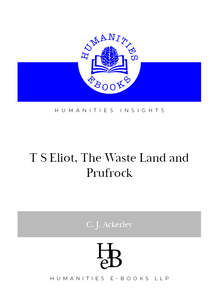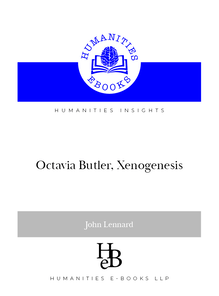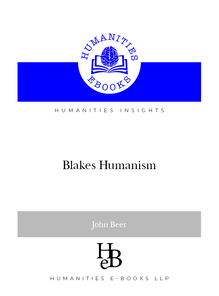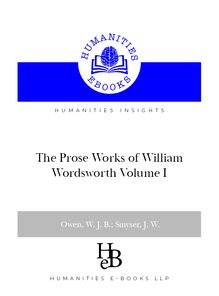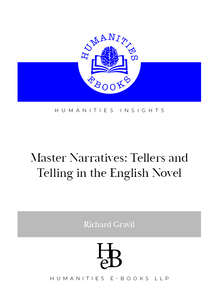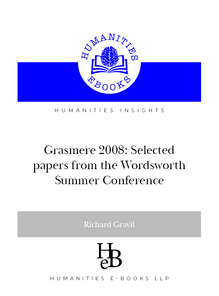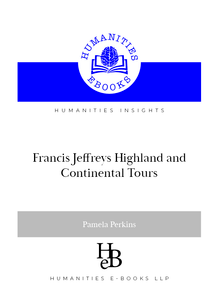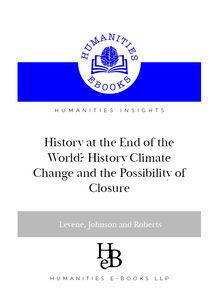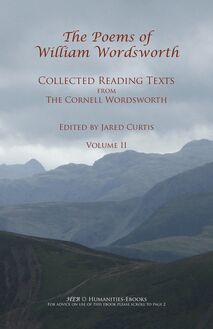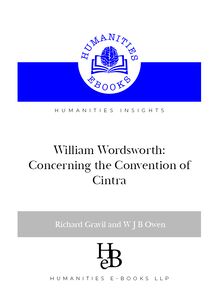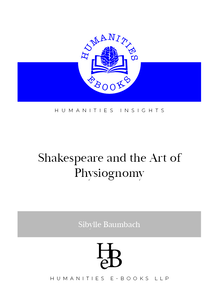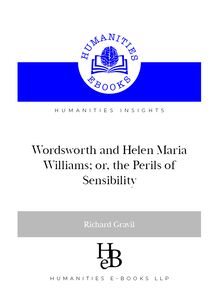-
 Univers
Univers
-
 Ebooks
Ebooks
-
 Livres audio
Livres audio
-
 Presse
Presse
-
 Podcasts
Podcasts
-
 BD
BD
-
 Documents
Documents
-
- Cours
- Révisions
- Ressources pédagogiques
- Sciences de l’éducation
- Manuels scolaires
- Langues
- Travaux de classe
- Annales de BEP
- Etudes supérieures
- Maternelle et primaire
- Fiches de lecture
- Orientation scolaire
- Méthodologie
- Corrigés de devoir
- Annales d’examens et concours
- Annales du bac
- Annales du brevet
- Rapports de stage
La lecture à portée de main
181 pages
English
Découvre YouScribe en t'inscrivant gratuitement
Je m'inscrisDécouvre YouScribe en t'inscrivant gratuitement
Je m'inscris
Obtenez un accès à la bibliothèque pour le consulter en ligne
En savoir plus
En savoir plus
181 pages
English
Obtenez un accès à la bibliothèque pour le consulter en ligne
En savoir plus
En savoir plus

Description
This new collection of Keith Sagar's writings on the poetry of D H Lawrence includes many new interpretations of well-known poems. It ends with a year-by-year checklist of reviews and criticism of Lawrence's poems, from 1913 to the present.
Sujets
Informations
| Publié par | Humanities eBooks |
| Date de parution | 11 janvier 2021 |
| Nombre de lectures | 0 |
| EAN13 | 9781847600509 |
| Langue | English |
| Poids de l'ouvrage | 1 Mo |
Informations légales : prix de location à la page 0,0498€. Cette information est donnée uniquement à titre indicatif conformément à la législation en vigueur.
Extrait
PublicationData
Text © Keith Sagar, 2007.
The Author has asserted his right to be identiîed as the author of this Work in accord-ance with the Copyright, Designs and Patents Act 1988. Copyright in images and in quotations remains with the sources given. Every effort has been made to trace the holders of copyright materials. If any other than those acknowledged on page îve have not been traced the author will be glad to make the necessary arrangements at the îrst opportunity.
Published in 2007 by Humanities-Ebooks LLP.Tirril Hall, Tirril, Penrith CA10 2JE
licenceanDPermissions
Licence: this book is licensed to the purchaser only and may be used on any de-vice owned by or assigned to the purchaser. It may not be placed on any network, or copied by or for another person.
It is permissible to print a copy for your own use, but not to copy and paste text.
isbn 978-1-84760-050-9
D. H. làwRENCE: POET
KEITh sàgàR
tIRRIL: HUMàNITIES-eBOOkS, 2007
cONTENTS
A Note on the Author
Acknowledgements
Introduction: Lawrence and Imagination
1. The Young Man and the Demon
2. Lawrence’s Debt to Whitman
3. ‘Little Living Myths’: Birds, Beasts and Flowers
4. The Genesis of ‘Snake’
5. Womb, Wind, Fissure and Underworld: the Stages of Lawrence’s Poetic Quest
6. ‘New, Strange Flowers’:Pansies, NettlesandLast Poems
Checklist of Criticism of Lawrence’s Poetry
Bibliography and Reference Key
a nOTE ON ThE aUThOR
KEITh sàgàR, fORMERLy rEàdER IN lITERàTURE àT ThE uNIvERSITy Of màNChESTER, IS CUR-RENTLy spECIàL PROfESSOR IN ThE sChOOL Of eNgLISh àT ThE uNIvERSITy Of nOTTINghàM. HE IS ThE àUThOR Of MàNy BOOkS ON làwRENCE, INCLUdINgThe Art of D. H. Lawrence, The Life of D. H. LawrenceàNdD. H. Lawrence: Life into Art, àNd SEvERàL ON tEd HUghES. HIS MOST RECENT BOOk,Literature and the Crime Against Nature(2005) dEàLS wITh SIxTEEN Of ThE gREàTEST wRITERS IN ThE WESTERN CàNON, fROM HOMER TO HUghES. sEE hTTp://www.kEIThSàgàR.CO.Uk
“Keith Sagar has done more than any other critic to reshape understanding of Lawrence as poet. In this collection of essays, he writes, with unpretentious ease and the gravity that comes from a life-time’s critical consideration, on the full range of the poetry.”chRISTOphER POLLNITz
aCkNOwLEdgEMENTS
thESE ChàpTERS àRE REvISEd vERSIONS Of MàTERIàL pREvIOUSLy pUBLIShEd àS fOLLOwS: Chàp-TERS 1, 3 àNd 6 IND. H. Lawrence: Life into Art, PENgUIN/VIkINg 1985; ChàpTER 5 IN The D. H. Lawrence Review, 24.1 (spRINg 1992); ChàpTER 4 INEtudes Lawrenciennes20 (1999); ChàpTER 2 INSymbiosis7.1 (apRIL 2003).
i ShOULd LIkE TO ThàNk chRISTOphER POLLNITz, GINETTE KàTz-rOy, sIMONETTà dE FILIppIS, tàkEO iIdà àNd iSàBEL FERNàNdES fOR ThEIR gENEROUS hELp.
iNTROdUCTION: làwRENCE àNd iMàgINàTION
làwRENCE wàS IN à dIRECT LINE Of dESCENT fROM SUCh EàRLIER pOETS àS bLàkE, cOLERIdgE, àNd WhITMàN, fOR whOM IMàgINàTION wàS EvERyThINg. YET IT IS NOT EàSy TO LOCàTE IN hIS discursive prose any precise deînition of what the word ‘imagination’ meant to him. thIS IS pROBàBLy BECàUSE hE dOES NOT REgàRd IMàgINàTION àS à SEpàRàTE fàCULTy àT àLL, but the perception which comes from a uniîed sensibility, ‘man alive, not mere bits […] the whole consciousness in a man, bodily, mental, spiritual at once’ [STH 195, 198]. HE dESCRIBEd EàCh Of hISPansiesas ‘a true thought, which comes as much from the heart and the genitals as from the head’ [CP 417]. All thought would be imagina-tive if it were indeed ‘a man in his wholeness wholly attending’ — attending, that is, not merely to the material outer world as it impinges on the îve grosser senses, but àLSO TO ThE SIgNàLS fROM OUR COUNTLESS OThER SUBTLER SENSES, SIgNàLS fROM wIThIN àNd wIThOUT whICh TO ThE LESS ThàN whOLE MàN REMàIN SUBLIMINàL OR UNINTELLIgIBLE, LIkE whITE NOISE. thUS MàNy OThER wORdS, SUCh àS ThOUghT, àwàRENESS, vISION, whOLENESS, are virtual synonyms for imagination in Lawrence’s writings. iN à wELL kNOwN pàSSàgE fROM à 1913 LETTER TO eRNEST cOLLINS làwRENCE wROTE:
thERE àRE SO MàNy LITTLE fRETS ThàT pREvENT OUR COMINg àT ThE REàL NàkEd ESSENCE of our vision. It sounds boshy, doesn’t it. I often think one ought to be able to pray before one works — and then leave it to the Lord. Isn’t it hard, hard work to come to real grips with one’s imagination — throw everything overboard. I always feel as if I stood naked for the îre of Almighty God to go through me — and it’s rather an awful feeling. One has to be so terribly religious, to be an àRTIST. [l I 519]
làwRENCE wàS SUBSEqUENTLy TO USE NàkEdNESS vERy fREqUENTLy àS àN IMàgE fOR IMàgI-nation. Clothing symbolizes not only the ‘many little frets’ which make it difîcult fOR àNy àRTIST TO àTTàIN àNd MàINTàIN ThE LEvEL Of CONCENTRàTION NECESSàRy fOR hIS wORk. It is everything the artist must be prepared to jettison — the layers of insulation whICh MOST Of US BUILd Up TO pROTECT OURSELvES fROM CONTàCT wITh ThE NOT-SELf; ThE LIES,
D. H. Lawrence: Poet
8
hypOCRISIES, COMpLàCENCIES, whICh SOCIETy IMpOSES ON US fOR ITS OwN pERpETUàTION; ThE gREàT COLLUSION whEREBy wE BELIEvE ThE ThINgS wE CONvINCE OURSELvES wE BELIEvE fOR NO BETTER REàSON ThàN ThàT wE BELIEvE ThàT OThER pEOpLE BELIEvE ThEM. aT ThE ENd Of ‘The Crown’, written in 1915, Lawrence wrote: ‘The present seeming is a ridiculous TRàvESTy. […] Why, i NEvER yET MET à MàN whO wàS àNyThINg BUT whàT hE hàd BEEN toldto be’ [RDP 306]:
WE kNOw ThàT wE àRE LIvINg IN à STàTE Of fàLSITy, ThàT àLL OUR SOCIàL àNd RELIgIOUS form is dead, a crystallized lie. Yet we say: ‘We will die for our social and reli-gious form’. In truth, we proceed to die because the whole frame of our life is a falsity, and we know that, if we die sufîciently, the whole frame and form and ediîce will collapse upon itself. But it were much better to pull it down and have à gREàT CLEàR SpàCE, ThàN TO hàvE IT COLLàpSE ON TOp Of US. [305]
For this ‘dead crystallized lie’ he frequently uses the image of a hard shell which MUST BREàk OpEN BEfORE gERMINàTION CàN TàkE pLàCE. iT IS à vIEw Of IMàgINàTION àS thoroughly subversive as Melville’s, obliged by its very nature to say ‘No! in thun-der’ to the most cherished beliefs and values of its time (‘the present seeming’). It is destructive for life’s sake, for ‘men may be utterly different from the things they seem now’. Once out of ‘the full armour of their own idea of themselves’, men have ‘a whole new universe to get into relationship with’ [305]. Getting into relationship with the universe is perhaps as good a deînition as any Of RELIgION àS làwRENCE UNdERSTOOd IT:
How marvellous is the living relationship between man and his object! be it man or woman, bird, beast , ower or rock or rain; the exquisite frail moment of pure conjunction, which, in the fourth dimension, is timeless. […] Hadn’t someone better write Mr. Wells’ History backwards, to prove how we’ve degenerated, in OUR STUpId vISIONLESSNESS, SINCE ThE CàvE-MEN? thE pICTURES IN ThE CàvE REpRESENT MOMENTS Of pURITy whICh àRE ThE qUICk Of CIvILIzàTION. thE pURE RELàTION BETwEEN the cave-man and the deer; îfty per cent. man, and îfty per cent. bison, or mam-MOTh, OR dEER. iT IS NOT NINETy-NINE pER CENT. MàN, àNd ONE pER CENT. hORSE; àS IN a Raphael horse. Or hundred per cent. fool, as when F.G. Watts sculpts a bronze horse and calls it Physical Energy. If it is to be life, then it is îfty per cent. me, îfty per cent. thee; and the third thing, the spark, which springs from out of the BàLàNCE, IS TIMELESS. JESUS, whO Sàw IT à BIT vàgUELy, CàLLEd IT ThE HOLy GhOST. [rDP 316–7]
D. H. Lawrence: Poet
9
iN ThIS SENSE àRT àNd RELIgION àRE COTERMINOUS. thE àwESOMENESS Of ThE RELIgIOUS OR IMàgINàTIvE ExpERIENCE àRISES fROM ThE àBSOLUTE REqUIREMENT, pRIOR TO àLL ELSE, TO UN-dERgO àN EgO-dEàTh, à dàRk NIghT Of ThE SOUL OR ROàd-TO-DàMàSCUS ShàTTERINg Of ThE OLd SELf. bIRkIN, CRàCkEd ON ThE hEàd àNd àLMOST kILLEd, STRIpS hIMSELf NàkEd àNd ROLLS IN ThE wET vEgETàTION. nEàRLy EvERy làwRENCE pROTàgONIST IS ENgàgEd IN à qUEST fOR ThE ESSENTIàL, àUThENTIC, NàkEd SELf. iNThe Escaped CockThàT pROTàgONIST IS JESUS hIM-self, who has to be cruciîed before he can relate to a woman or to the phenomenal wORLd. thàT IS hIS RESURRECTION. iN LàTER LIfE làwRENCE CàME TO CàLL ThàT ESSENTIàL NàkEd SELf, ThàT HOLy GhOST, hIS ‘demon’. When all the layers of insulation and falsity and egotism have been stripped 1 àwày, whàT IS LEfT IN à MàN whO IS STILL à LIvINg MàN IS à LITTLE gREEN dEMON. thE dEMON SpEàkS à LàNgUàgE whICh IS OffENSIvE TO ThE RàTIONàL, CIvILIzEd CONSCIOUSNESS, whICh SEEkS TO SILENCE IT, àS BOTh hIS MOThER àNd hIS gIRL-fRIENdS SOUghT TO SILENCE Lawrence’s demon. But the greater problem is that it is offensive to the normal self of the artist himself, who must înd ways of putting that normal self in abeyance, at least dURINg ThE CREàTIvE àCT, EvEN If ThàT CàN BE dONE ONLy By pàINfULLy BURNINg IT àwày, LIkE sT. làwRENCE ON hIS gRIdIRON. tOwàRdS ThE ENd Of hIS LIfE làwRENCE wROTE:
From the îrst, I was a little afraid of my real poems — not my ‘compositions’, BUT ThE pOEMS ThàT hàd ThE ghOST IN ThEM. thEy SEEMEd TO ME TO COME fROM somewhere, I didn’t quite know where, out of a me whom I didn’t know and didn’t want to know, and to say things I would much rather not have said: for ChOICE. tO ThIS dày i STILL hàvE ThE UNEàSy hàUNTEd fEELINg, àNd wOULd RàThER NOT write most of the things I do write. […] Only now I know my demon better, and, àfTER BITTER yEàRS, RESpECT hIM MORE ThàN My OThER, MILdER àNd NICER SELf. [cP 849–50]
làwRENCE wàS àT pàINS TO MàkE CLEàR ThàT ThE dEpThS Of ThE UNkNOwN SELf OUT Of which these ‘hauntings’ came was not the same thing as the Freudian unconscious, that oubliette of writhing repressed desires. Lawrence’s concept of his own uncon-SCIOUS wàS vERy dIffERENT. lIkE bLàkE àNd HUghES, hE Sàw ThE SMàLL INNER dàRkNESS
1
Where women are concerned Lawrence would use a different set of metaphors, though one reason why so many of the protagonists in his îction are women is that they are less egotistical, less insulated than men to begin with. Lawrence came more and more to agree with Jung that men innately strive for perfection whereas women strive for wholeness, and that a striving for perfection is hubristic and delusory. Hence his Jesus inThe Escaped Cockneeds the Priestess of Isis to complete his renunciation of his messianic mission and initiate him into a new life of wholeness.
D. H. Lawrence: Poet
as but a portion of the Great Outer Darkness which spells God:
10
iN ThE vERy dàRkEST CONTINENT Of ThE BOdy, ThERE IS GOd. aNd fROM HIM ISSUES the îrst dark rays of our feeling, wordless, and utterly previous to words; the in-nermost rays, the îrst messengers, the primeval, honorable beasts of our being, whOSE vOICE EChOES wORdLESS àNd fOREvER wORdLESS dOwN ThE dàRkEST àvENUES Of the soul, but full of potent speech. Our own inner meaning. [STH 205]
POETRy àppROàChES ThIS wORdLESS SpEECh ThROUgh SyMBOLS. lIkE YEàTS, làwRENCE wàS àwàRE Of CONTàININg wIThIN hIMSELf à hUgE RESERvOIR Of àRChETypàL SyMBOLS whICh wERE ONE MEàNS Of MàgICàLLy LINkINg Up hIS OwN LIfE NOT ONLy wITh ThE LIvES Of hIS REàdERS, BUT wITh ThE LIvES Of EvERyThINg ThàT LIvES:
aNd NOThINg IS TRUE, OR gOOd, OR RIghT, ExCEpT IN ITS OwN LIvINg RELàTEdNESS TO ITS OwN CIRCUMàMBIENT UNIvERSE; TO ThE ThINgS ThàT àRE IN ThE STREàM wITh IT. [167]
Like Whitman and Hopkins he saw the created world as made of up countless ‘little living myths’ which had healing truths to tell if one could learn how to understand ThEM. POETRy wàS LàRgELy ThàT àTTEMpT:
thE ESSENTIàL qUàLITy Of pOETRy IS ThàT IT MàkES à NEw EffORT Of àTTENTION, àNd ‘discovers’ a new world within the known world. Man, and the animals, and the owers, all live within a strange and for ever surging chaos. The chaos which wE hàvE gOT USEd TO wE CàLL à COSMOS. thE UNSpEàkàBLE INNER ChàOS Of whICh wE àRE COMpOSEd wE CàLL CONSCIOUSNESS, àNd MINd, àNd EvEN CIvILIzàTION. bUT IT IS, ULTIMàTELy, ChàOS, LIT Up By vISIONS, OR NOT LIT Up By vISIONS. JUST àS ThE RàINBOw Mày OR Mày NOT LIghT Up ThE STORM. aNd, LIkE ThE RàINBOw, ThE vISION pERIShETh. [P 255]
Imaginative art is the constant struggle to renew it. The great works are ‘all things to all men’ because
IN ThEIR whOLENESS ThEy àffECT ThE whOLE MàN àLIvE, whICh IS ThE MàN hIMSELf, BEyONd àNy pàRT Of hIM. thEy SET ThE whOLE TREE TREMBLINg wITh à NEw àCCESS Of LIfE, ThEy dO NOT jUST STIMULàTE gROwTh IN ONE dIRECTION. [stH 196]
thE IMàgINàTION Of ThE àUThOR, ThROUgh ThE wORk, RENEwS, fERTILIzES, ThE IMàgINàTION Of ThE REàdER, ThEREBy hELpINg TO hEàL ThE dUàLISTIC SpLIT, CORRECT ThE IMBàLàNCES, IN ThE reader’s psyche.
-
 Univers
Univers
-
 Ebooks
Ebooks
-
 Livres audio
Livres audio
-
 Presse
Presse
-
 Podcasts
Podcasts
-
 BD
BD
-
 Documents
Documents
-
Jeunesse
-
Littérature
-
Ressources professionnelles
-
Santé et bien-être
-
Savoirs
-
Education
-
Loisirs et hobbies
-
Art, musique et cinéma
-
Actualité et débat de société
-
Jeunesse
-
Littérature
-
Ressources professionnelles
-
Santé et bien-être
-
Savoirs
-
Education
-
Loisirs et hobbies
-
Art, musique et cinéma
-
Actualité et débat de société
-
Actualités
-
Lifestyle
-
Presse jeunesse
-
Presse professionnelle
-
Pratique
-
Presse sportive
-
Presse internationale
-
Culture & Médias
-
Action et Aventures
-
Science-fiction et Fantasy
-
Société
-
Jeunesse
-
Littérature
-
Ressources professionnelles
-
Santé et bien-être
-
Savoirs
-
Education
-
Loisirs et hobbies
-
Art, musique et cinéma
-
Actualité et débat de société
- Cours
- Révisions
- Ressources pédagogiques
- Sciences de l’éducation
- Manuels scolaires
- Langues
- Travaux de classe
- Annales de BEP
- Etudes supérieures
- Maternelle et primaire
- Fiches de lecture
- Orientation scolaire
- Méthodologie
- Corrigés de devoir
- Annales d’examens et concours
- Annales du bac
- Annales du brevet
- Rapports de stage
Signaler un problème
YouScribe
Le catalogue
Le service
© 2010-2024 YouScribe
